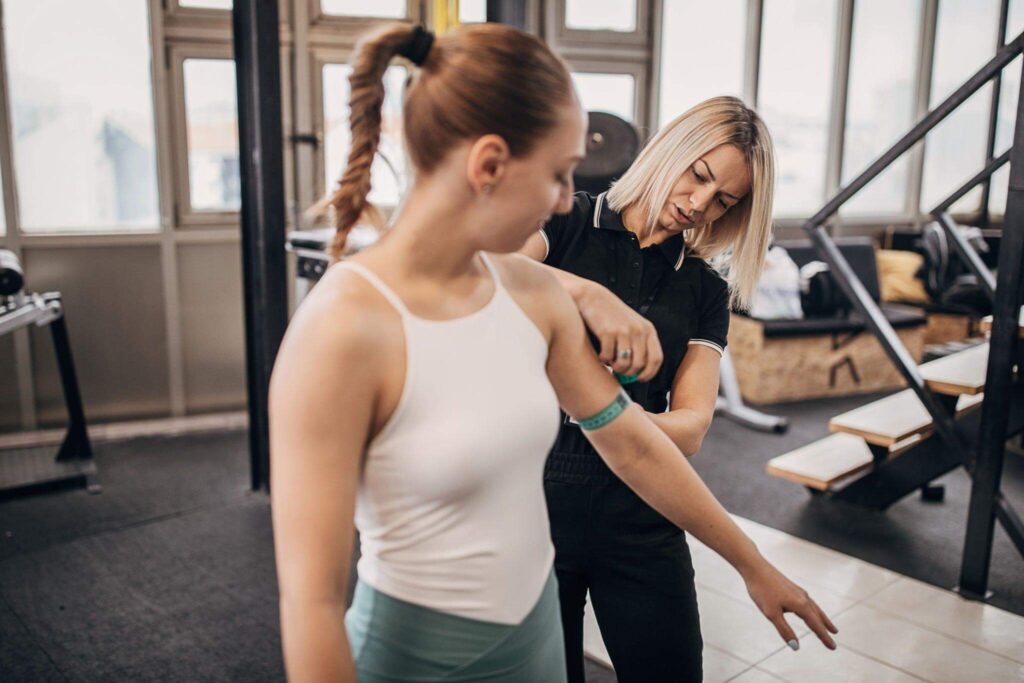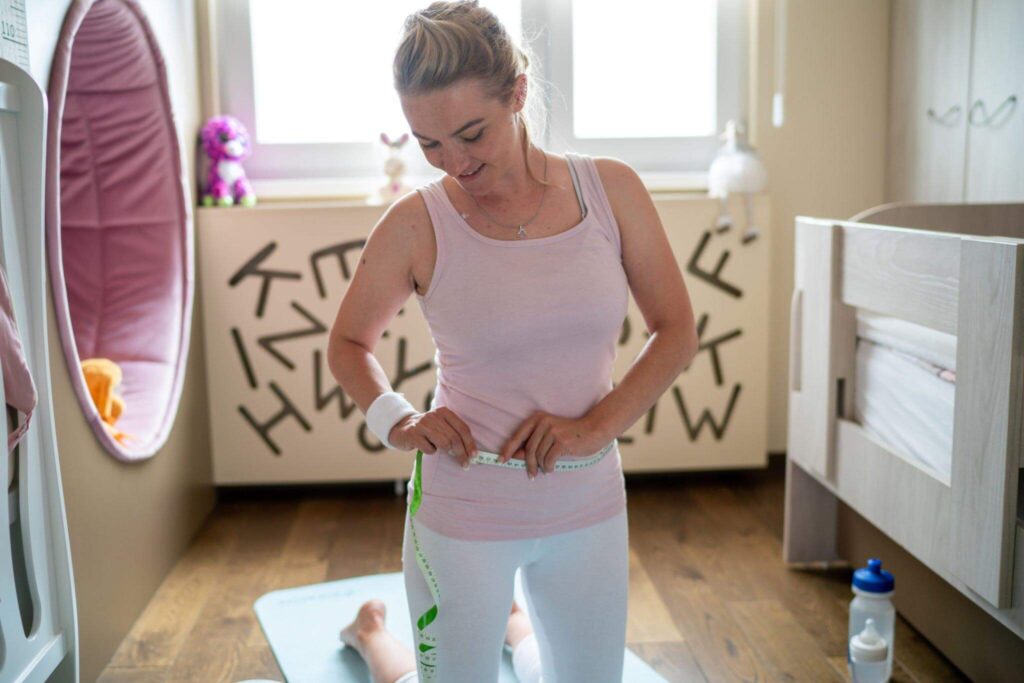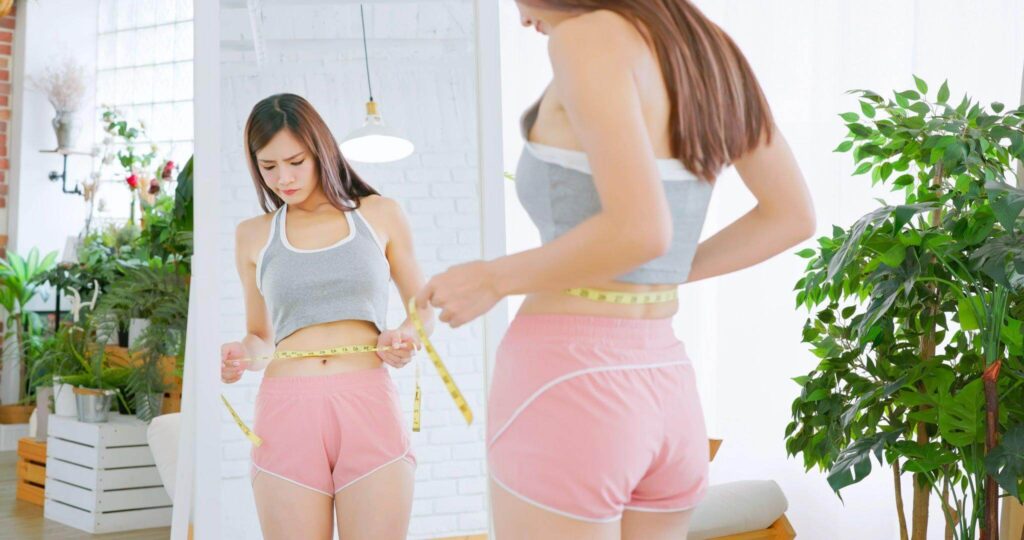Getting an excellent fit starts with taking precise body measurements. Whether you decide to draft your pattern block from measurements of all body parts or use a commercial fitting pattern, having precise dimensions is essential to the success of your block. (And the success of every item you construct depends on the block fitting correctly too!)
A tape measure is all you need! While having someone else take your measures is easiest, you can also do it on your own. Simply take a seat in front of a mirror to ensure that the tape is in the proper location.
You should ideally only be measured while wearing undergarments. Leotards or other form-fitting apparel, however, are acceptable.
The following body measurements must be taken to decide what size to make for the finished item to fit properly. Having someone else perform the measurement is almost always preferable. If that isn’t a possibility, you can find a clothing manufacturer to measure a piece of cloth that fits you perfectly and use these measurements as a general guide instead.

What Are The Types Of Measurements In Garments?
The four key measures on your public size chart are typically bust, waist, hips, and height. However, you may have other measurements of body parts that are significant, such as the inseam for bottoms, depending on the style of garment you are making.
What Are the 3 Types of Body Measurements?
Sizes are often determined by the bust, waist, and hip measures, sometimes known as “body part measurements” or “vital statistics.” The three inflection points of the female body shape are matched by them.
When making garments for oneself or another person, you must take 6 essential steps on how to do body measurements. Of course, not all of your garments will require the use of all six.
The height is the first measurement taken. The high bust area should be the second one to be taken. Around 2 inches above the bust, go around the armpits at their crook.
The entire bust is the crucial measurement body. At the widest region of the bust, you are taking measurements around your or their bodies. The natural waist body part measurement comes next. The ribbon or elastic’s narrowest portion is here.
The hips are the significant measurement. The broadest area is measured using a tape measured 7 inches below the natural waist. The rear waist length comes last. This distance is measured from the bone at the base of the neck to the waist measurement.

Common Metric Units: These typical measurements are needed for most of our clothing. Take them as directed.
Bust
The bust measurement should be taken across the chest in the front and at or just below your shoulder blades in the back, approximately the fullest area of your bust. The measuring body parts tape needs to remain level throughout.
Waist
The smallest section of your waist should be measured; this is typically between your lowest rib and belly button.
Hip
The widest area of your hips and buttocks should be measured for the hip measurement.
Waist to Hem
The Waist to Hem measurement should be taken vertically, starting at the location where you measured your waist and ending at the bottom of the hem. This could be your knee, the floor, or another body length measurement, depending on which dress length you choose for a particular design.
Shoulder to waist
The shoulder-to-waist measurement should be taken vertically, starting at the top of your shoulder (where a shirt’s shoulder seam often is) and ending at the waist measurement.
Arm Length
Depending on which sleeve length option you select for a certain design, the Arm’s Length measurement captures the length of your preferred sleeve. It should be cut at the top of the across-shoulder measurement (where a shirt’s shoulder seam typically begins) and end at the length you specified (such as the wrist for a full-length sleeve).
Arm Width
To prevent the sleeve from being either too tight or too loose, the Arm Width measurement should be obtained around the broadest area of your upper arm.

How Do You Measure Garment Specs?
The pattern grading maker uses the visual cues drawn on a flat drawing of a specific garment in conjunction with the full body measurements specification sheet to create the pattern. A double arrow and a mark, either in a number or an alphabet, are used to specify the pointers. The measurements listed on the spec sheet are represented by those alphabets.
HPS: (High Point Shoulder) (High Point Shoulder) is a primary reference point situated where the neckline and shoulder seams converge at the highest point of the shoulder. There are numerous metrics related to the HPS.
The center front (CF), which should not be confused with placket edges, is an invisible line that runs vertically down the exact center of a garment’s front.
An invisible line that runs vertically down the exact middle of the back of a garment is known as the center back (CB).
Side seams (SS) are the seams that go from the bottom of the armhole to the bottom hem on the left and right sides of a garment.
To develop a garment measurement specification sheet, always seek the assistance of a garment tech pack designer. Because you may put your custom clothing manufacturer in danger with just one minor error. You should always ask for assistance if you are a new brand and have no experience with clothing design and patterns.

What Is Garment Chest Measurement?
Having a second person wrap a cloth tape measure around the chest’s widest part is the most accurate approach to gauge chest size. The most precise measurement will be obtained by keeping the tape measure body parts parallel to the ground. An accurate across-chest measurement can also be obtained by body measurements for clothing that fits well, such as a dress shirt or sweatshirt.
Half And Across-Chest Measurement
Laying the t-shirt (or hoodie, shirt, or another top) flat on a flat surface yields the measurement. The garment is then measured from a few centimeters below where the sleeve joins the body of the garment across the front, side seam to side seam. A person with a 100cm chest would find 50cm across-the-chest clothing to be skin-tight. As a result, when doubled, the half-chest or across-chest measurement should be a few centimeters larger than the individual’s actual chest measurement (depending on desired fit and garment stretch).
Garment Measurement Guideline: How to Measure Shirts & Blouses

- Chest: Measure from edge to edge, straight across, 1 inch below the armhole.
- Waist: At the HPS (High Position Shoulder) or SNP point indicated below (Side Neck Point). Measurements are made edge to edge, straight across.
- Bottom Hem: Side seam to side seam, measured straight or curved along the bottom border (as specified on the measurement chart).
- Shoulder Seam – Measure along the seam or the natural fold line from HPS/SNP to the outer shoulder border.
- Outer shoulder edge to outer shoulder edge, across the shoulders
- Sleeve Overarm – Measure along the fold from the outside of the shoulder to the edge of the cuff.
- Measure straight from the bottom of the armhole to the outer edge of the shoulder.
- Measure the distance along the curve of the armhole’s curved bottom shoulder edge.
- Measure straight across from edge to edge parallel to the sleeve opening at the eighth bicep, 1 inch below the armhole.
- Cuff/Sleeve Opening – Measure from edge to edge along the cuff/sleeve opening.
- From the seam to the edge of the cuff, measure the cuff’s depth and height.
- Across Front – Measure edge to edge of armhole straight across starting at the designated point below HPS/SNP.
- Measure across the back from the designated position below the HPS/SNP, edge to edge of the armhole.
- Front Neck Drop: The distance from the top of the front neck to the back neck seam. From the imaginary line to the top border of the back neck seam, the back neck drop.
- Front Length – Measured parallel to the center front from HPS/SNP straight down to the hem.
- Center Back Length Measurement – Measure down from the center back neck to the hem.
FAQs
What Categories Of Measures Exist?
The four principal types of measurement are nominal, ordinal, interval, and ratio.
What Size Should A Woman That Is 5’3″ Be?
How to determine the dimensions of the ideal figure. The following are your typical proportions if you’re a short woman between 5 and 5 34 feet tall: 32 to 33 inches for the bust, 22 to 23 inches for the waist, and 32 to 33 inches for the hips.
Final Words
Measurement of the real person (or individuals) who will wear a garment is referred to as a body measurement for clothes. These measures, which are distinct from those collected for clothing, can be made manually or purchased from various body data services. Building a balanced, well-fitting garment requires taking into account a variety of body measures.







